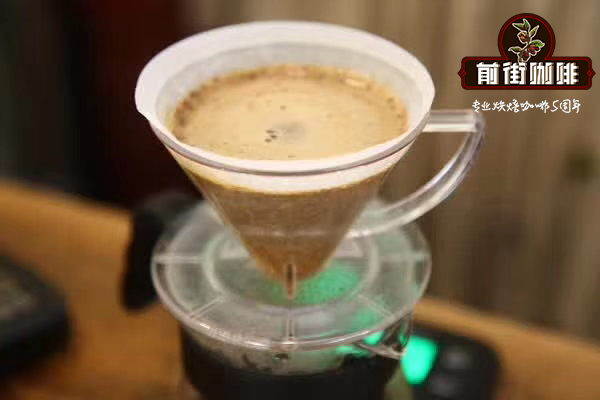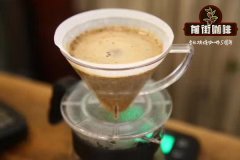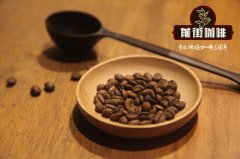Hawaiian Coffee Coffee Hawaiian kona Queen Coffee from Hawaii

Professional Coffee knowledge Exchange more information about coffee beans Please note the coffee workshop (Wechat account cafe_style)
Qianjie Coffee-Queen of kona, Hawaii
Hawaii is the only coffee producing region located in developed countries. The altitude here is certainly not high, but because of the special seaweed weather, the coffee products produced here are not low. Coffee was first introduced to Hawaii in 1817 when coffee was first sold in Spain during the reign of Kamehameha. However, it did not succeed until 1825, when Oahu Mayor Chie Boki introduced coffee from Brazil and planted it in Manoa Valley.
It was about 1828 when bourbon coffee was introduced into the city. Large-scale coffee was planted in Kauai in 1836, but the only area that survived was the KONA area, which was wiped out because of illness in 1858.
02 | Product description
Hawaii has a seaside weather, where the weather changes little throughout the year, but there is a big difference between day and night, and there are enough weather to cover the weather. Of course, the average elevation of the coffee producing area is not very high, but the coffee products produced here are not low because of Hawaii's special seaweed climate and fertile volcanic soil.
MAUI has a large coffee shop Ka'anapali, which is divided into a lot of small fields, but coffee bars are produced centrally. This restaurant was a sugar cane plant from 1860 to 1988 before it was converted to a coffee bar.
Altitude: 100-550 m
Harvest time: September-January of the following year
Variety: Kaduai, Kaddura, pickup, mocha
This region can be regarded as an older coffee producing area in Hawaii, and only one coffee shop in the region is owned by a company located in Hawaii MOLOKAI.
Altitude: 500-750 m
Harvest time: September-January of the following year
Variety: pickup truck, Kaduai
Planting began in 1996 after the sugar cane was closed, and before 2010, coffee peaches produced here had to be processed in nearby regions, such as PUNA or KONA, but now they have been set up in the right place, so farmers no longer have to take them to other places for post-processing.
The coffee industry began to grow coffee in 1852. Like other regions in Hawaii, the coffee industry began to decline because of the prosperity of the sugar industry, but it began to grow coffee again in the mid-1990s.
Altitude: 100-600 m
Harvest time: August-January of the following year
The popularity of coffee in Hawaii mainly comes from this region, which is different from other producing areas in Hawaii. coffee cultivation here is more diversified. There are more than 630 coffee plants in Hawaii to produce coffee, and most of the noodles are less than 2 centimeters. it is usually bought by different families. The west and south of this place are famous for producing KONA coffee, and the elevation is between 800m and 1100m, which is the most suitable growing environment for coffee coffee. As a result, coffee bars were grown on the slopes of Horala and Mauna Luo.
The natural environment of the KONA region has given birth to Arabica coffee, which has made it the plant with the highest coffee yield in the world. The quality of coffee is guaranteed, and the taste of coffee cultivated under the unique growth environment and climate is more fragrant. The coffee beans planted in KONA are very good-looking in shape and bright in color, and are regarded as "the most beautiful coffee beans in the world".
03 | Coffee classification
KONA coffee beans are mostly classified by bean size, which can be divided into four grades, the highest levels of Extra Fancy, Fancy,Prime and Gr. No.1 et al. It is also divided into Type1 and Type2 at the same time.
Type1 is standard coffee beans, including the largest Kona Extra Fancy, followed by a ranking from large to small: Kona Fancy;Kona Select and Kona Prime.
Type2 is a specialty adzuki bean, including several grade adzuki bean Kona Number 1 Peaberry and small Kona Peaberry Prime.
04 | processing method
Water washing is the main method in Hawaii. The biggest difference from the daily method is the use of fermentation to remove fruit grains. After the fermentation and removal of the fruit, the coffee beans will be washed again because the bacteria and bacteria will remain on the coffee beans. In order to clean the soup, this step will consume a lot of water, and then bake and burn.
The sweet mountain spring water of Hawaii provides the ideal conditions for water washing, which creates the bright and clear appearance and fresh taste of Kojia coffee beans. The washed coffee beans are placed on a huge plate.
END
Important Notice :
前街咖啡 FrontStreet Coffee has moved to new addredd:
FrontStreet Coffee Address: 315,Donghua East Road,GuangZhou
Tel:020 38364473
- Prev

Cedar King Coffee, Essex, West Motherland, King Coffee.
Professional Coffee knowledge Exchange more Coffee Bean Information Please note Coffee Workshop (Wechat account cafe_style) Front Street Coffee-Essex Seymour King Jiezhong Seymour King Ethiopian Sidamo Lion King: elevation: 1800 m ~ 2000 m above sea level: daily processing method: Yamada
- Next

Ruixing Coffee Suspension Ruixing Coffee Announcement Suspension Lawsuit
Professional coffee knowledge exchange More coffee bean information Please pay attention to coffee workshop (Weixin Official Accounts cafe_style) Front Street-Ruixing coffee suspension Recently, the coffee industry is not peaceful, broke out a global heat continues to heat up event-Ruixing coffee forged 2.2 billion yuan transaction. And this matter is still Ruixing coffee self-exposure, as a listed company, such a serious fraud incident exposure
Related
- Beginners will see the "Coffee pull flower" guide!
- What is the difference between ice blog purified milk and ordinary milk coffee?
- Why is the Philippines the largest producer of crops in Liberia?
- For coffee extraction, should the fine powder be retained?
- How does extracted espresso fill pressed powder? How much strength does it take to press the powder?
- How to make jasmine cold extract coffee? Is the jasmine + latte good?
- Will this little toy really make the coffee taste better? How does Lily Drip affect coffee extraction?
- Will the action of slapping the filter cup also affect coffee extraction?
- What's the difference between powder-to-water ratio and powder-to-liquid ratio?
- What is the Ethiopian local species? What does it have to do with Heirloom native species?

